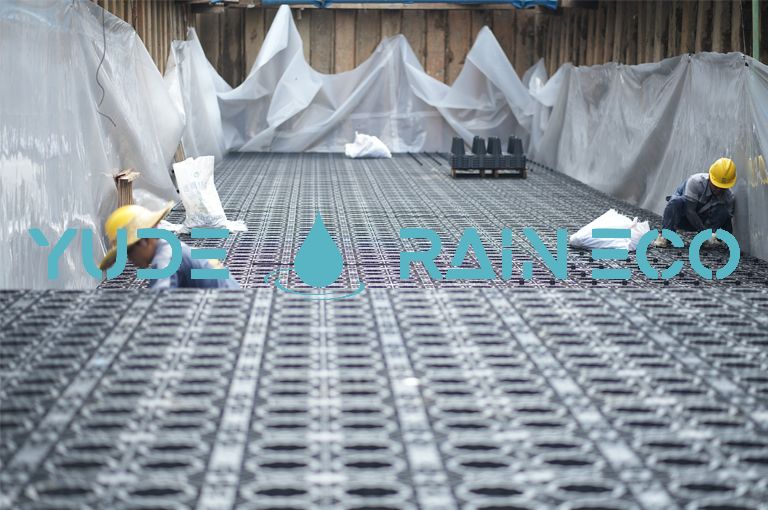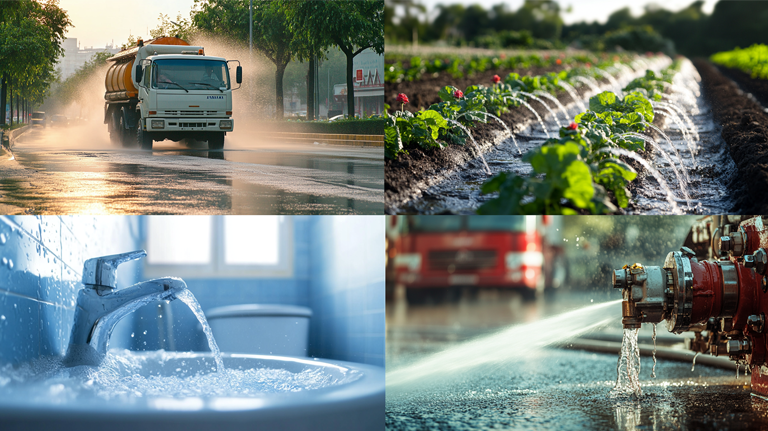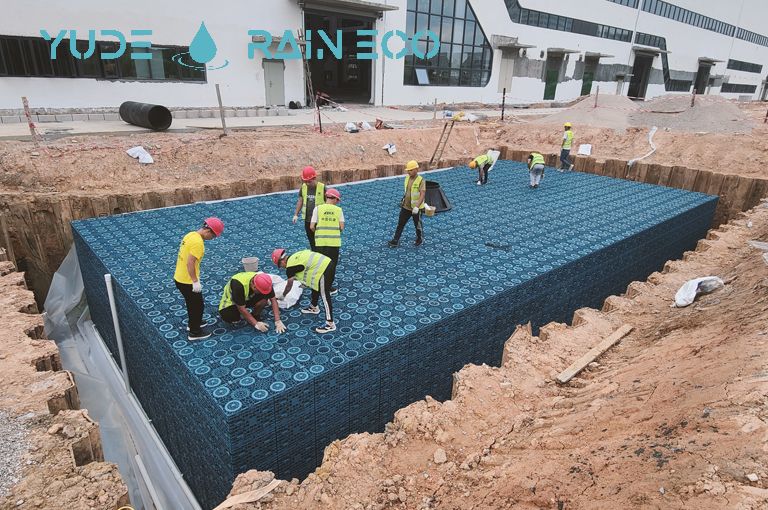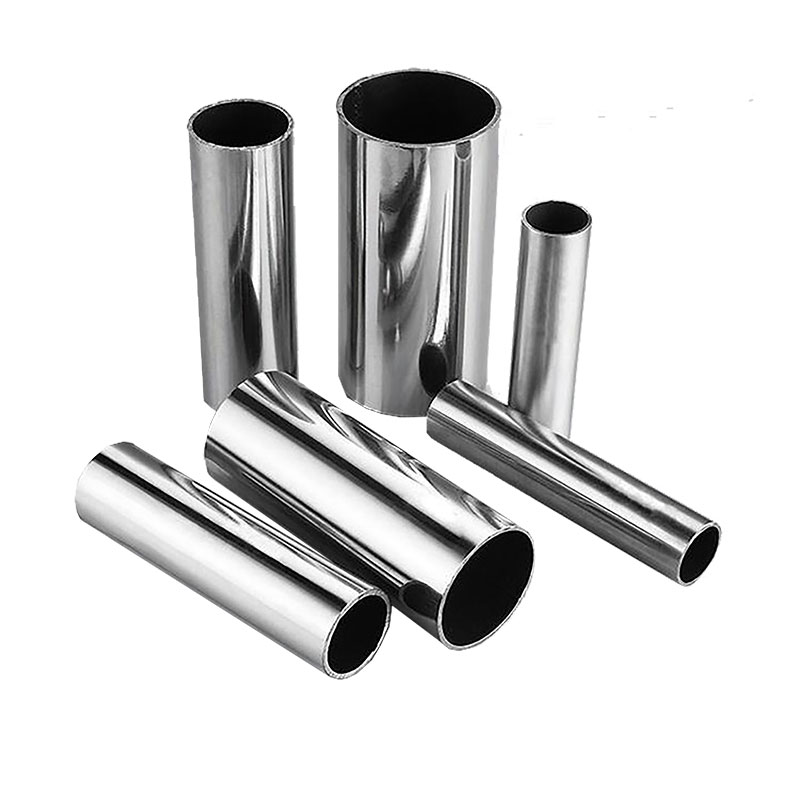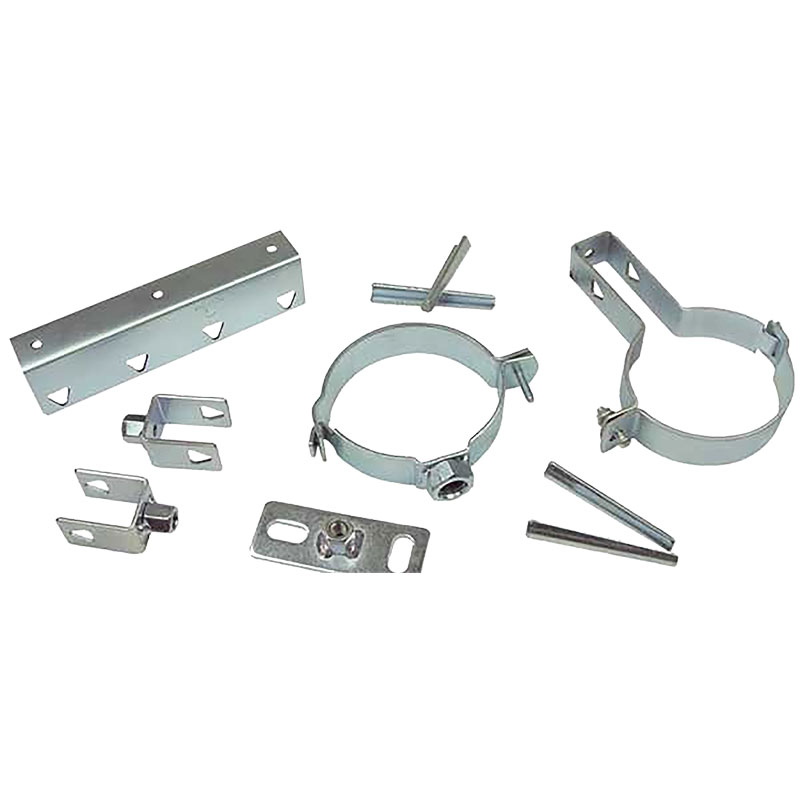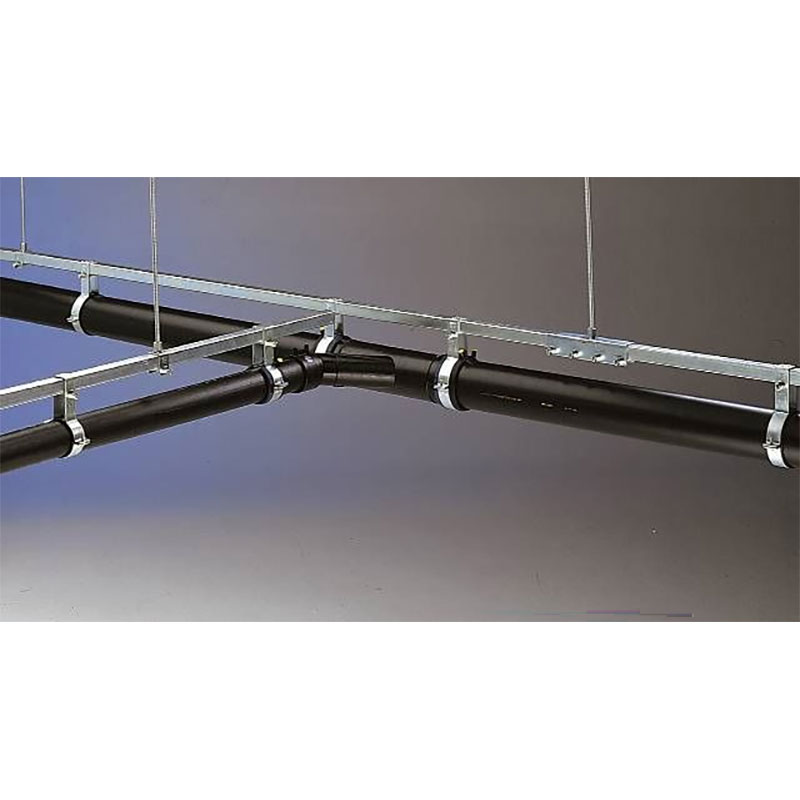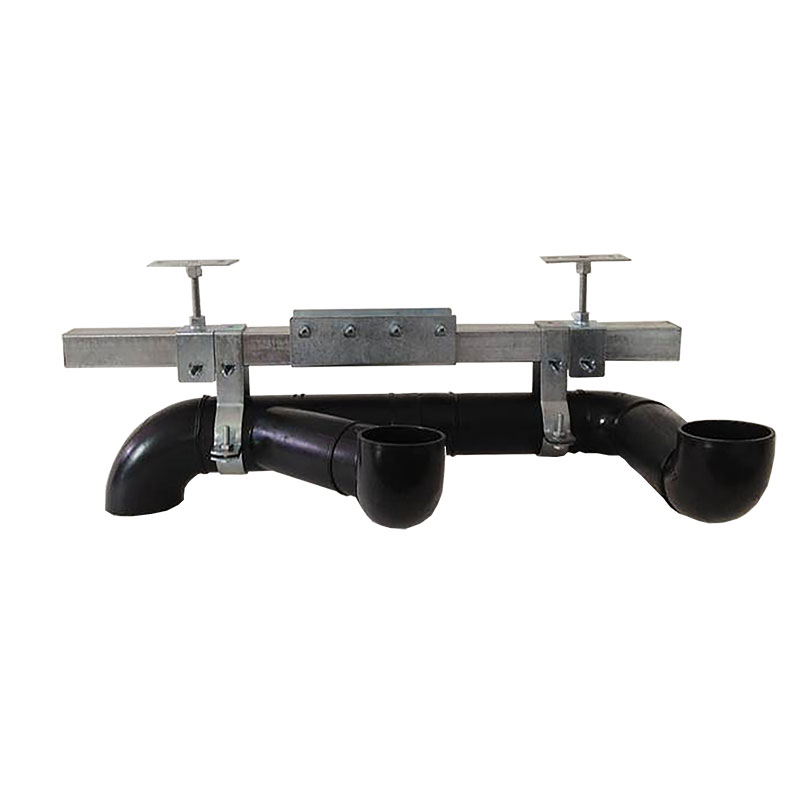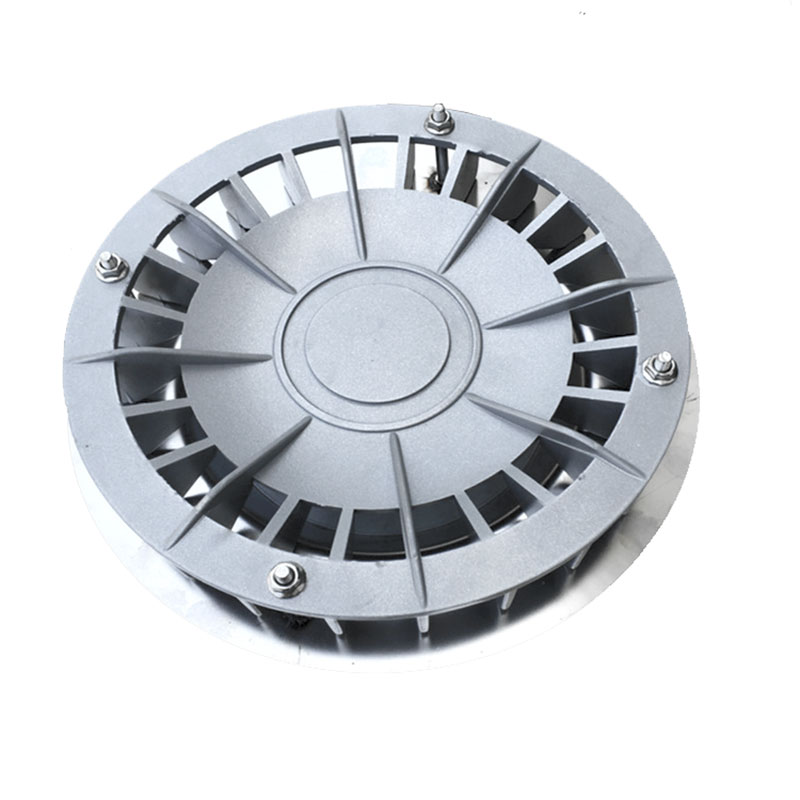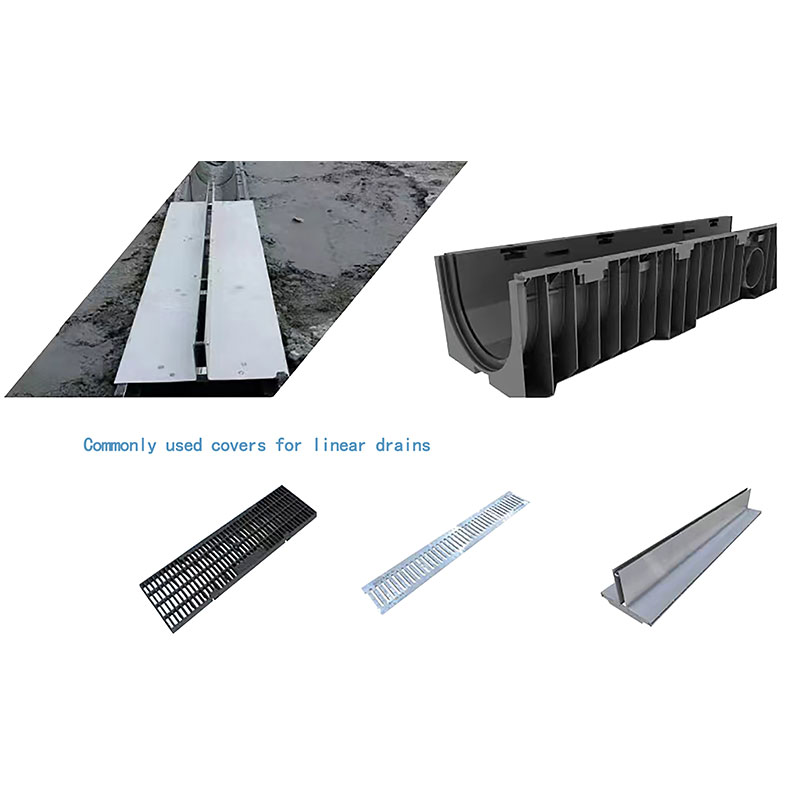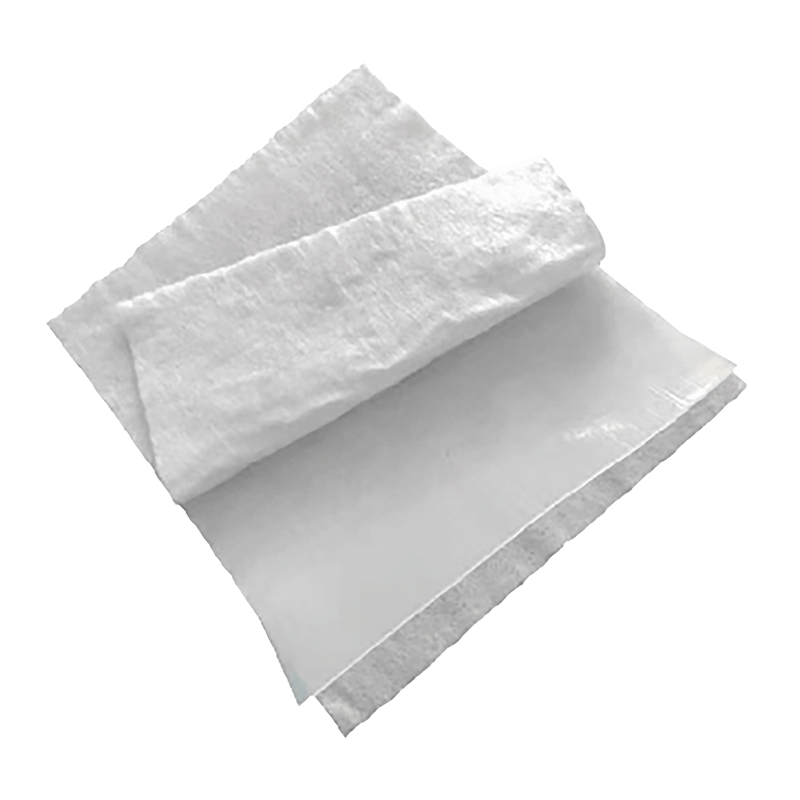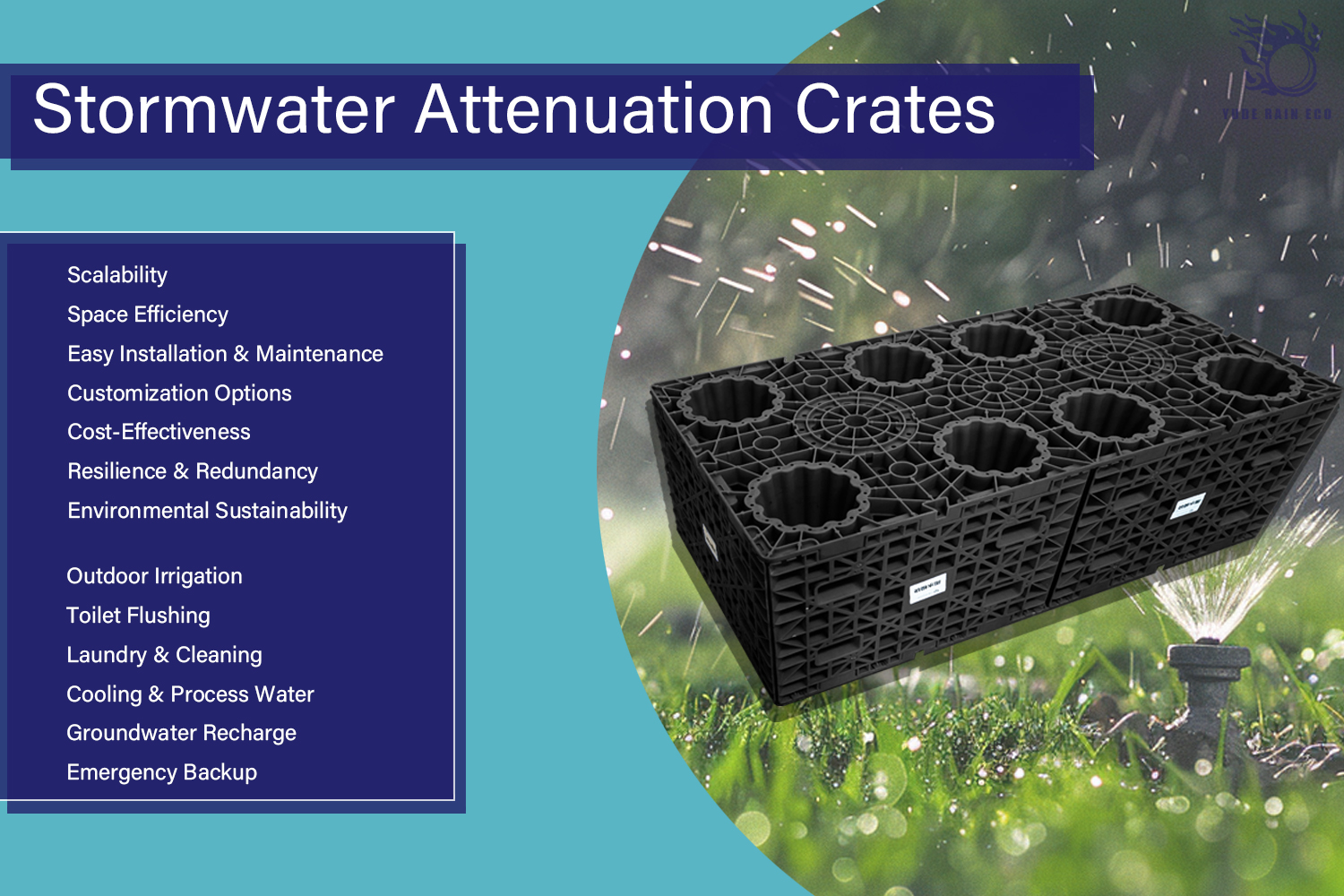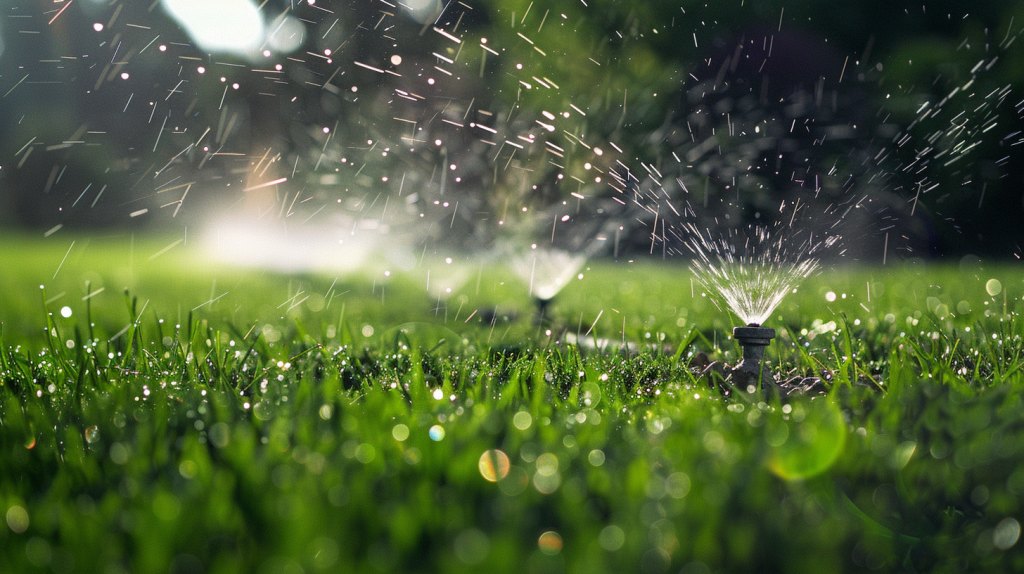I. What is an Underground Cistern? What Types Exist?
An underground cistern is a facility specifically designed for collecting and storing rainwater, aiming to effectively utilize precipitation resources, reduce urban flood risks, and improve ecological environments. Based on different materials and structures, underground cisterns can be categorized as follows:
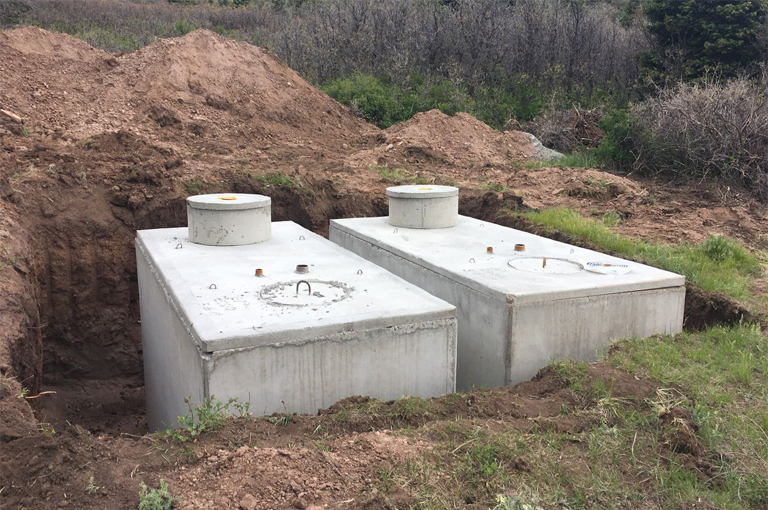
1. Traditional Concrete Cisterns
Traditional concrete cisterns have been widely used for rainwater harvesting. These cisterns typically have a large capacity, allowing them to store significant amounts of rainwater. According to a study, the lifespan of concrete cisterns can reach 50 years or more, making them particularly suitable in areas with water scarcity. However, their main drawbacks are long construction periods, heavy weight, and transportation difficulties, which increase construction costs and time.
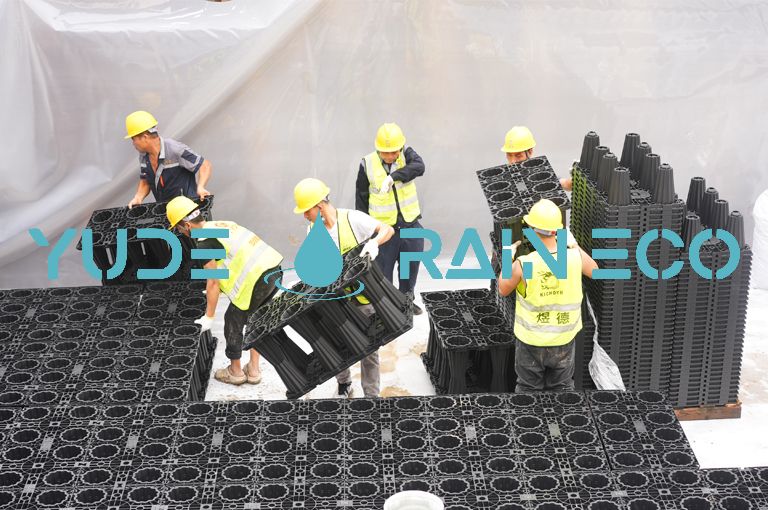
2. Plastic (Polypropylene) Harvesting Modules
Polypropylene (PP) modules are a newer type of harvesting method that has gained popularity in recent years. Due to their lightweight and flexibility, PP modules are increasingly favored in urban construction. These modules can bear weights of 32 tons, 45 tons, and 60 tons, meeting the needs of different buildings, and their installation is straightforward, saving construction time and costs. Additionally, PP modules exhibit excellent corrosion resistance and durability, performing well in various environments.
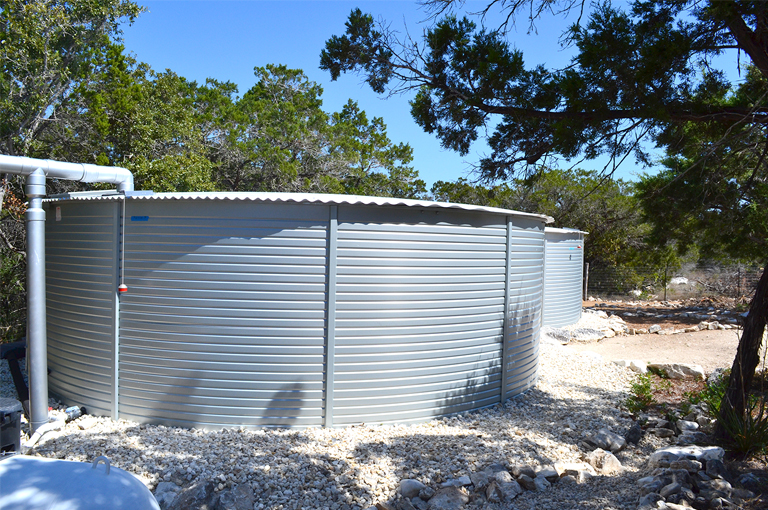
3. Prefabricated Steel Cisterns
Prefabricated steel cisterns are designed to address large-scale projects, with high strength and flexibility allowing them to adapt to various usage scenarios. These structures generally have faster construction times, effectively shortening project durations. However, their higher material costs and transportation difficulties limit their application in smaller projects.
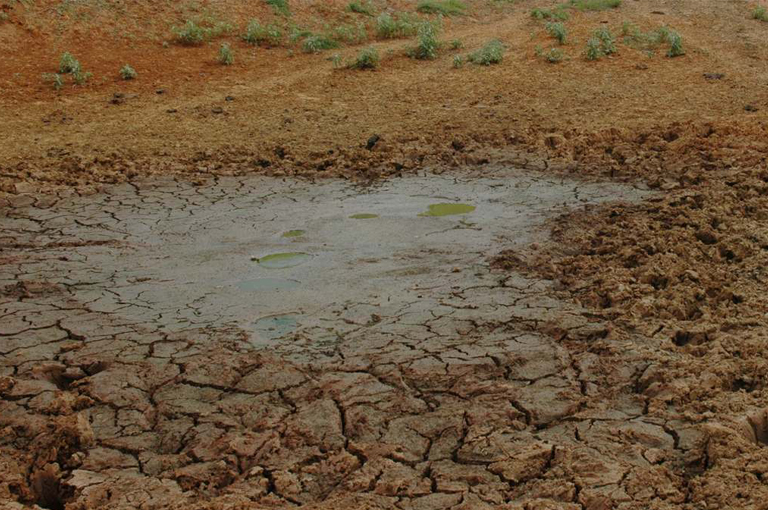
4. Natural Soil Harvesting
Utilizing natural soil for rainwater harvesting is an ecologically friendly approach that can effectively reduce urban flooding. However, the effectiveness of this method is influenced by soil type and climatic conditions, making it unsuitable for all regions. In urbanized areas, the natural soil’s capacity for rainwater harvesting may not meet the demand.
II. What Are Their Benefits? What Are the Advantages and Disadvantages of Each?
Rainwater harvesting systems not only reduce flood risks but also enhance water resource utilization efficiency. According to research published in the Journal of Water Resource Management, implementing rainwater harvesting systems can increase urban water resource utilization by approximately 30%. Here is a detailed analysis of different types of cisterns:
- Traditional Concrete Cisterns:
- Advantages: Their durability makes them suitable for long-term use, especially in water-scarce regions. Furthermore, due to their large storage capacity, they effectively alleviate flood issues during rainy seasons.
- Disadvantages: Long construction times, transportation difficulties, and high costs limit their application in small projects.
- Plastic (Polypropylene) Harvesting Modules:
- Advantages: Lightweight, easy to install, and strong load-bearing capacity make them suitable for Low Impact Development (LID). Their flexibility and convenience in urban construction contribute to their widespread use.
- Disadvantages: Under extreme weather conditions, PP modules may deform, impacting their effectiveness.
- Prefabricated Steel Cisterns:
- Advantages: High strength makes them suitable for extreme weather conditions, particularly when heavy loads are anticipated.
- Disadvantages: Higher costs and transportation challenges may render them uneconomical for certain projects.
- Natural Soil Harvesting:
- Advantages: Environmentally friendly and promotes groundwater recharge while reducing urban heat island effects.
- Disadvantages: Effectiveness is limited by soil type and climate conditions, potentially leading to unstable harvesting results.
III. How to Choose the Right Underground Rainwater Harvesting Method for Buildings?
Choosing the appropriate underground rainwater harvesting method requires considering multiple factors, including the type and scale of the building, rainfall amounts, and soil characteristics.
- Selection Criteria:
- Building Type: High-rise buildings and low-rise residences have different rainwater collection needs. High-rise buildings may require larger storage capacities, while low-rise homes can opt for smaller systems.
- Geographic Location: Variations in rainfall amounts in different regions directly affect the design of harvesting systems. For instance, areas with frequent rainfall may require larger cistern capacities to handle sudden downpours.
- Low Impact Development: Low Impact Development (LID) is an urban design concept focused on sustainability, aiming to minimize the environmental impact of urban development by preserving natural hydrological cycles. Under this framework, PP modular rainwater attenuation boxes are considered the best option because:
- Environmental Benefits: PP modules can effectively reduce rainwater runoff, improve water quality, and mitigate urban heat island effects.
- Load-Bearing Capacity: Users can select PP modules with varying load-bearing capacities based on project requirements to meet architectural design needs.
- Flexibility: PP modules easily integrate with existing infrastructure, adapting to different architectural styles.
- Rainwater Attenuation and Flood Prevention: PP modular rainwater attenuation boxes can effectively mitigate rainwater flow during heavy rainfall, relieving pressure on drainage systems and thus reducing urban flooding risks. This system adjusts the outflow rate of rainwater, allowing it to be gradually discharged during peak periods, achieving flood prevention effects.
IV. Future Prospects of Underground Rainwater Harvesting Cisterns
As global attention on water resource management and environmental protection increases, the market demand for underground rainwater harvesting systems is expected to continue growing. According to the Global Water Resource Market Report, the global rainwater management market is projected to reach $104 billion by 2027.
- Market Trends: Policy support and technological innovations will drive development in this field, especially in rapidly urbanizing regions where the application of underground rainwater harvesting systems will become more widespread.
- Technological Innovations: The application of new materials and smart monitoring technologies will enhance the efficiency and reliability of underground rainwater harvesting systems. For instance, IoT-based monitoring systems can provide real-time data on cistern water levels and quality, ensuring proper system operation.
V. Design and Construction Key Points for Rainwater Harvesting
When designing and constructing underground rainwater harvesting systems, the following principles should be adhered to:
- Design Principles: Ensure the structural safety and stability of the system by calculating cistern capacity and drainage capabilities to avoid overflow or leaks during heavy rainfall.
- Construction Key Points:
- Material selection should meet environmental standards and consider local climatic conditions to ensure long-term stability of the cistern.
- During construction, quality control should be strictly maintained to avoid issues that complicate future maintenance.
VI. Maintenance and Management of Rainwater Harvesting Systems
Maintenance and management are crucial for ensuring the long-term effective operation of underground rainwater harvesting systems.
- Regular Inspections: Conduct comprehensive inspections of the system regularly to ensure there are no blockages preventing rainwater from flowing smoothly into the cistern. Industry standards recommend inspections every six months.
- Monitoring Technologies: Utilizing modern monitoring technologies can provide real-time assessments of the system’s operational status, allowing for timely identification and resolution of potential issues. For example, sensors can monitor water levels to ensure the system does not overflow due to excessive rainwater.
- Maintenance Plans: Develop reasonable maintenance plans to keep the system in good condition during use, preventing performance decline due to a lack of maintenance.
VII. Successful Case Studies Domestically and Internationally
Several successful implementations of rainwater harvesting systems around the world offer important insights for future designs and implementations.
- Domestic Case Study:
City: Shenzhen
Building: Shenzhen International Conference Center
The Shenzhen International Conference Center integrated an underground rainwater harvesting system using polypropylene (PP) modular attenuation boxes. This system has a capacity of 500 cubic meters and is expected to recover around 1,000 cubic meters of rainwater annually, primarily for landscaping irrigation and toilet flushing. This measure not only reduces reliance on municipal water but also effectively decreases rainwater runoff in the surrounding area, minimizing flood risks. According to the Shenzhen Water Authority, this project can reduce rainwater runoff by up to 30% each year. - International Case Study:
Country: Singapore
Building: Gardens by the Bay
Gardens by the Bay employs a comprehensive rainwater management system that uses underground cisterns and PP modules to collect and utilize rainwater for irrigation and other purposes. This system achieves a rainwater utilization rate of 80%, helping Singapore set an international benchmark in water resource management. - Another International Case Study:
Country: Germany
City: Munich
Building: Munich City Library
The Munich City Library has implemented an integrated rainwater management system that includes a 150 cubic meter underground cistern, using harvested rainwater for surrounding landscaping and toilet supply. This system can collect and utilize approximately 200 cubic meters of rainwater annually, reducing reliance on municipal supply while protecting the city’s water ecology.
Through these analyses, it is evident that different underground rainwater harvesting methods have distinct advantages and applicable scenarios. In the context of accelerated urbanization and heightened environmental awareness, rainwater harvesting systems are set to play an increasingly important role in sustainable urban development.
VIII. Why Choose Yude Rain Eco‘s Rainwater Attenuation Box
When selecting a rainwater attenuation solution, it is crucial to consider the quality, reliability, and effectiveness of the products. Yude Rain Eco stands out in the industry for several compelling reasons:
- Superior Material Quality
Yude’s rainwater attenuation boxes are made from high-quality polypropylene (PP), which is lightweight, strong, and corrosion-resistant. This ensures longevity and durability, allowing for effective performance even in challenging environmental conditions. The non-toxic nature of PP makes it safe for various applications. - High Load-Bearing Capacity
The attenuation boxes are designed to accommodate varying load requirements, with capacities of 32 tons, 45 tons, and 60 tons. This flexibility makes them suitable for a wide range of building types, from residential homes to large commercial structures, ensuring that they can meet the specific needs of any project. - Efficient Water Management
Yude’s systems are engineered for optimal water management, effectively controlling runoff and reducing flood risks. The attenuation boxes are designed to delay the outflow of rainwater, allowing for gradual release and minimizing the impact on drainage systems during heavy rainfall. - Innovative Design
Yude Rain Eco’s products incorporate advanced design principles that ensure maximum efficiency and ease of installation. The modular nature of the attenuation boxes allows for easy integration into existing infrastructure, making them an ideal choice for both new developments and retrofitting projects. - Environmental Commitment
Yude Rain Eco is committed to sustainability and environmental protection. By choosing Yude’s rainwater attenuation solutions, clients contribute to a greener future, promoting efficient water use and reducing the ecological footprint of urban developments. - Proven Track Record
With numerous successful projects across various sectors, Yude Rain Eco has established a reputation for reliability and excellence. Case studies demonstrate significant improvements in rainwater management and resource utilization in both domestic and international projects.
IX. Call to Action
Embrace sustainability and enhance your water management strategies today! At Yude Rain Eco, we are dedicated to providing innovative rainwater harvesting solutions that not only meet your needs but also contribute to a healthier environment.
Ready to transform your water resource management?
Contact us now for a consultation! Our team of experts is here to assist you in selecting the perfect underground rainwater harvesting solution tailored to your project’s requirements. Explore our range of high-quality rainwater attenuation boxes and discover how we can help you achieve your sustainability goals.
Let’s work together to build a greener future!
Here’s a comparison table for the four types of underground rainwater harvesting systems:
| Type of Underground Cistern | Advantages | Disadvantages | Benefits | Suitable Applications/Conditions |
|---|---|---|---|---|
| Traditional Concrete Cisterns | – Durable (50+ years lifespan) | – Long construction time | – Large storage capacity | – Water-scarce regions |
| – Effective flood alleviation | – Heavy weight | – Reduces urban flooding | – Large-scale applications | |
| – Higher transportation costs | ||||
| Plastic (Polypropylene) Modules | – Lightweight and easy to install | – May deform under extreme weather | – Corrosion-resistant | – Urban areas with limited space |
| – High load-bearing capacity (32/45/60 tons) | – Flexibility in design | – Residential buildings | ||
| – Low Impact Development (LID) projects | ||||
| Prefabricated Steel Cisterns | – High strength and flexibility | – Higher material costs | – Suitable for extreme weather conditions | – Large commercial projects |
| – Faster construction | – Transportation challenges | – Infrastructure projects | ||
| Natural Soil Harvesting | – Environmentally friendly | – Effectiveness depends on soil type | – Promotes groundwater recharge | – Areas with good soil conditions |
| – Reduces urban heat island effects | – Suitable for parks and green spaces |

